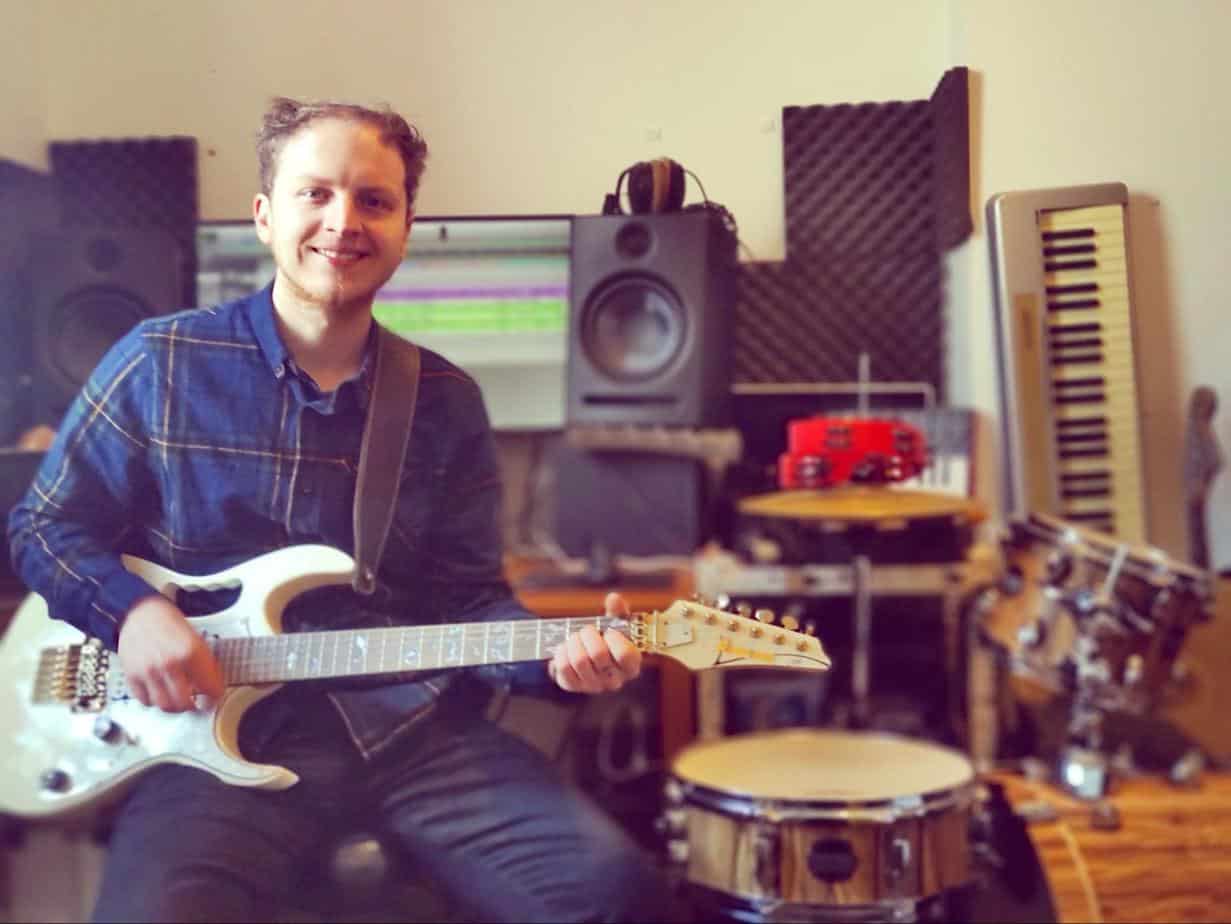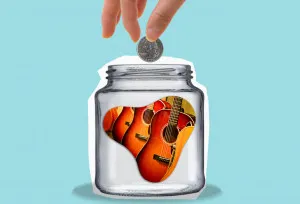You only need to go through a few easy steps to build a simple guitar practice routine. First, work out the skills you want to learn, then determine how much time you can commit to developing those skills each day and week.
Then, it’s just a matter of allocating certain routines and exercises into dedicated practice slots.
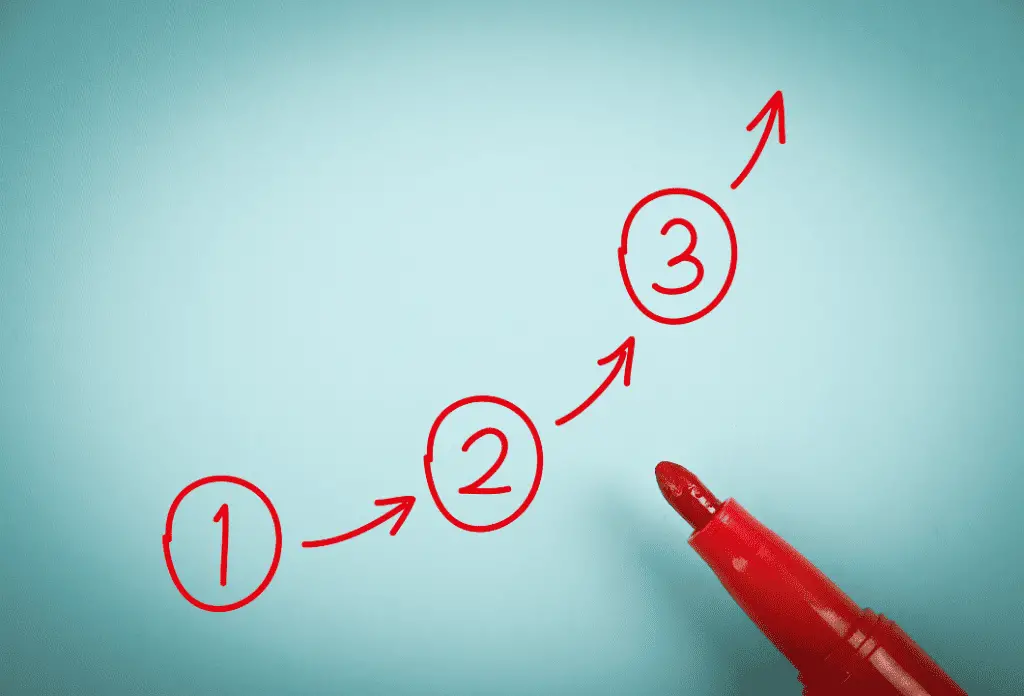
In this article, you can find a full tutorial on how to build a good practice routine to accelerate your guitar progression.
I’ve played guitars for nearly 20 years, and my learning was mostly self-taught. I’ve experienced firsthand how important an effective practice routine is in developing and maintaining your skill.
Teaching yourself is one way to learn guitar, but taking premium online guitar lessons or even free YouTube guitar lessons and consistently practicing is a more proven method.
If you don’t practice, you’re going to sound bad.
Before we get into it, here are some wise words from Jimi Hendrix — one of the best guitar players ever.
“It was so hard for me at first… Sometimes you will be so frustrated you’ll hate the guitar, but all of this is just a part of learning. If you stick with it, you’re going to be rewarded.” (1)
Build Your Guitar Practice Routine
Building a guitar practice routine is really a three-step process:
- Identify your guitar goals
- Determine the skills needed to accomplish those goals
- Organize a consistent practice schedule.
If you follow those steps, you can build a killer practice routine and level up your guitar skills.
Identify Your Core Goals
Before designing your practice sessions, you need to identify an end goal. That might be learning three chords by the end of summer or mastering the entire fretboard by year’s end. Maybe it’s learning all the dots on a fretboard. Whatever your skill level, pick a goal or two and write them down.
If you’re new to guitar, you may not know what your goal should be — and that’s OK! Here are some goals to consider:
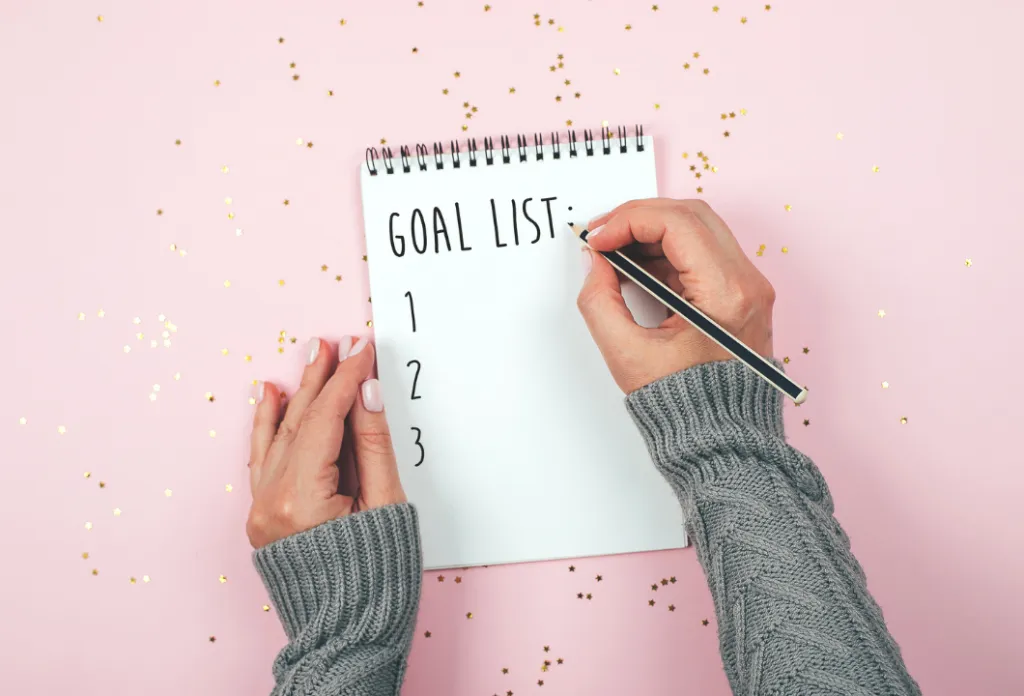
- Play a specific song or collection of songs.
- Write your own songs.
- Effectively solo over chord changes.
- Develop a specific tone that’s unique to you.
- Learn to read sheet music.
- And more: Playing in a band; record your own music; busk on the streets.
The point is to commit to a very actionable goal. And write it down in a way that’s very clear.
For example, if you want to learn how to play the solo from Queen’s “Bohemian Rhapsody,” then write down: “Perfect Brian May’s iconic solo in Queen’s Bohemian Rhapsody by year’s end.”
That’s a very clear goal that, if accomplished, is going to make you an even more skilled guitar player.
If you’re still not exactly sure what you want to accomplish, then I suggest listening to or watching your favorite guitarists for inspiration. Work out which components define their unique style — Are they great songwriters? Improvisers? Or do they have a large repertoire of face-melting riffs?
I recommend beginners to make a collection of three goals. Here are some suggestions:
- Learn how to play a popular song.
- Learn 3-5 major pentatonic scales for soloing.
- Play in front of people — even just a small group.
It can be tempting to make a massive, all-encompassing list, which can be good for the long term, but I suggest focusing on a few topics at a time, then coming back and updating your list as you progress. Don’t overwhelm yourself!
Identify the Skills Needed to Achieve Your Guitar Goals
After you’ve made note of your broader guitar goals and motivation, you need to identify the underlying techniques and skills that are required to achieve them.
The best way to do this is by learning songs. When learning a song, you have to figure out the chords, the riffs, and the strumming patterns. Those are three skills you can jot down and start practicing!
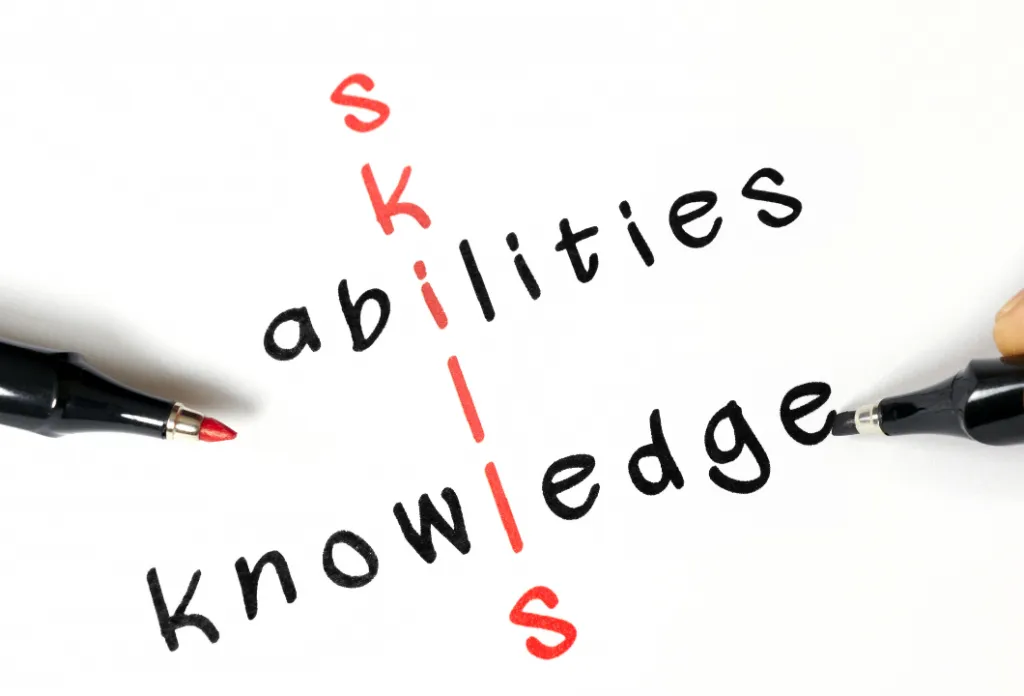
Learning Eric Clapton’s “Wonderful Tonight,” is a great example. You can learn the famous lick that’s played throughout the song, in addition to the chord progressions. Give yourself some bonus points if you can start singing over it.
If you’re taking a more traditional approach to learning the guitar, your goals might look entirely different.
Many classical players, for instance, start with the goal of perfecting their posture and hand position. They then move on to reading music and learning scales.
The player who is identifying skills in an individual song, like “Wonderful Tonight,” is identifying some foundational skills, like shaping chords and transitioning between those chords, in addition to more complicated skills, like mastering string vibrato.
The more traditional player is focused primarily on those foundational skills. Once they have those down, they feel confident playing through a bevy of different musical pieces.
Rank Skills by Difficulty
I constantly take notes of the techniques I want to learn and add them to my guitar practice sessions. I then try to give each topic a priority score from 1 to 5.
Skills that come up more often or that are harder get a higher score. Less common or easier skills get a lower score. Learning how to transition from a G chord to a C chord is a 1 or 2 for most beginner players. Finger-tapping arpeggios up and down the fretboard is likely more of a 4 or 5.
I tend to prioritize the hard stuff, with the assumption that if I can master something that’s difficult, the lower priority skills will come more naturally.
Find and Create Guitar Exercises
Next, you need to find exercises to practice the particular skills.
There are countless exercises out there, it’s just about finding the right ones. This could be as simple as playing a solo or melody line on repeat until you nail it. Or you can take it deeper and look at what is going on theoretically in the solo.

For example, a song might have a super-fast solo using the major scale. In this case, you can find exercises that practice the major scale and other exercises that practice alternate picking techniques to improve your speed.
Another song might have fast changes between chords, so you could practice those chords and also find chord exercises that improve your transition speed.
You can split exercises into two categories: mental and mechanical.
Mechanical exercises are designed to improve your coordination and fine motor skills. The guitar is a tough instrument to play, so strengthening your fingers physically is important in achieving a good sound.
Playing guitar is equally a head game as it is physical. Having a deeper understanding of music theory makes playing guitar easier and less confusing.
Mental exercises could involve studying the fretboard, working out how scales, chord progressions, or key changes connect, or improving your sense of rhythm by practicing with a metronome or backing track.
I think mental exercises are often overlooked by many guitarists, but I find them to be equally as important as physical technique.
Here’s a pro tip: These guitar books are a great place to find exercises!
• • •
Plan Your Practice Sessions
After you’ve worked out the topics you want to practice, the next stage is actually building out your practice routine. This routine is fluid and can be as extensive as possible. It all comes down to how much time you’re willing to invest in learning the guitar.
Practice Length
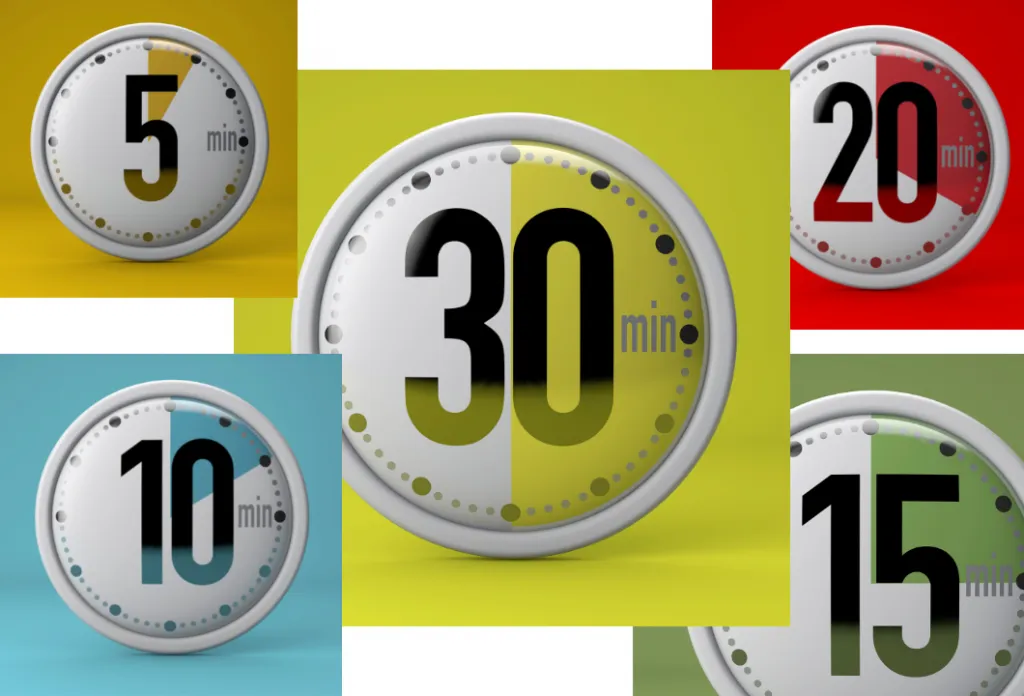
I like to structure my routines on a weekly schedule, although ultimately it’s up to you and how you learn best. For consistency, it’s generally better to have small, regular sessions than larger, infrequent sessions. I typically shoot for 3.5 hours per week — or about 30 minutes per day.
Work out how much time you can dedicate each day to your guitar practice routine. Whether it’s 15 minutes or 5 hours a day. Even if you’re busy and only have a short amount of time to practice each day, you can still make solid progress by maximizing the time you do have.
Try to be honest with yourself. Don’t allocate more time than you can spare and end up stressing out that you’re falling behind.
Divide Sessions Into Topics
Once you’ve worked out how much time you can allocate each day, you need to divide these sessions up into topic slots. The exact numbers here vary based on how many topics you’re trying to learn and how much time you have but follow this example to get an idea.
I generally recommend focusing on four core topics per session.
If you’re practicing for an hour a day, you could split it into 4×15 minute slots.
Example Practice Session Plan
Below is an example practice session plan. Obviously, your schedule doesn’t have to be as rigid. You might start practicing scales and have a breakthrough that inspires you to keep going. It’s OK if you skip chords in your practice session for that day.
| TIME (1 hour) | TOPICS |
| Minute 0-15 | (10m) Left-hand finger exercises / finger dexterity.(5m) Right-hand picking/strumming patterns. |
| 15-30 | Scales and theory (5m) Major Scale practice over the entire fretboard.(5m) Minor Scales.(5m) Other scales/arpeggios. |
| 30-45 | (7m) Chords (any new chords, shapes, or chord progression).(8m) Specific Techniques (Hammer-ons, pull-offs, pitch bending, etc). |
| 45-60 | Playing and learning songs. |
How Should You Structure Your Practice Routine?
Often you can organize these into a logical progression.
I like to start off with finger/fretboard exercises just to warm up my hands and brain a bit before I start practicing different songs, techniques, or theory elements. Start slow and build up speed! Put the easy stuff at the start and the difficult parts towards the end.
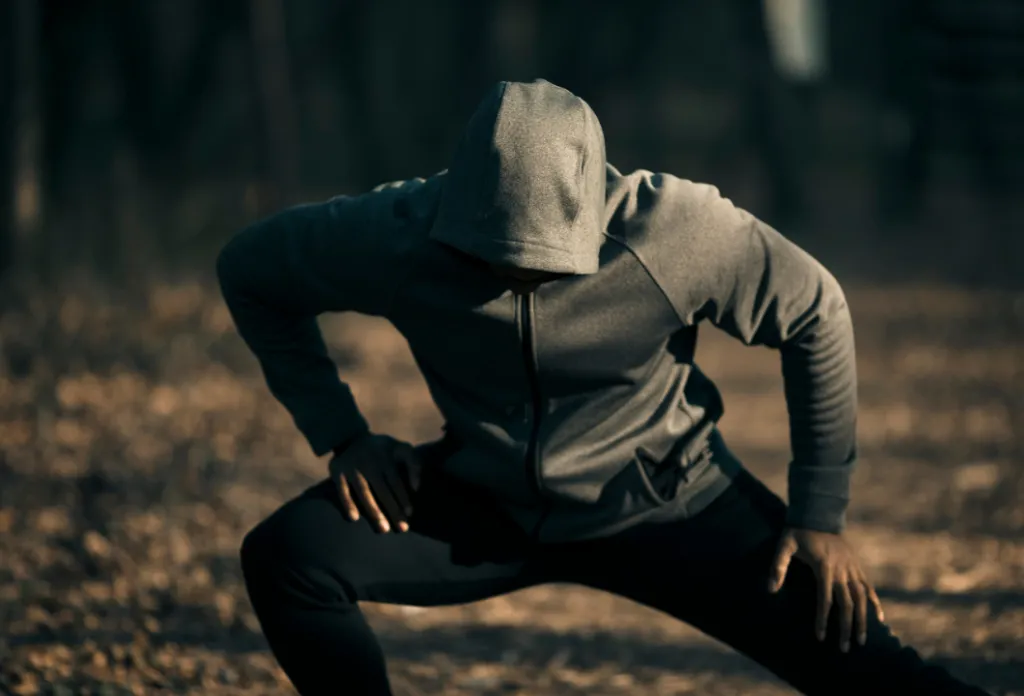
Don’t be too strict on yourself. See it as a framework guide rather than a list of chores. If you’re struggling with a particular technique, feel free to spend extra time on it and leave out something that might be feeling easy.
If you get completely stuck on something, often it’s a good idea to move on to the next topic, and come back to the sticking point in the next session after having some time to process it.
Remember, it’s a marathon, not a race. Read my guide on how long it takes to learn guitar to get a sense of how much time it can take to get to certain guitar skill levels.
Update Your Practice Schedule Regularly
Keeping your practice schedule fresh is key to developing skills and maintaining motivation.
Once you feel comfortable with certain skills or songs, take them out and add in more techniques or new songs you want to learn.
I try to switch up parts of my practice session every few weeks, sometimes more if I make quicker progress.
It’s important to progress at a rate that works for you. Don’t spend so long on one topic that you get bored of it, but don’t skim over stuff too quickly before it sinks in.
• • •
Essential Tips for an Effective Practice Routine
The best guitar practice routines cover all the foundational skills and techniques you need to develop into the guitarist you want to become. They are also built to encourage you to evolve your skills at a natural and fun pace.
Before looking at some example daily practice routines, here are a couple of important things to consider when constructing your own practice routine.
Stay Dedicated and Passionate – Just Like the Professionals!
Learning is one thing, but maintaining your skills also requires dedication. Make sure you create a practice routine that you can stick to until the skills click.

If you want to make it to professional levels, you’re going to have to stick with it. For example, Van Halen used to practice around 3 hours a day, and Yngwie Malmsteen was reported to shred it for up to 8 hours per session. Even Steve Vai, renowned for his 10-hour marathon practice sessions (2) emphasizes that it should be an amount of time that works for you and not too much. The best force for improving is passion!
Go Beyond Your Comfort Zone
I wish I’d realized this earlier, but it can be super helpful and inspirational to listen to music (and practice techniques) that are outside of your interests and comfort zone.
I’m not telling you to force yourself to listen to music you hate – just prepare to find inspiration in unexpected corners of the musical world.
Always try to expand your musical horizons, getting a broader view of sound in general. This might involve learning other instruments, learning songs from genres you don’t listen to, or experimenting with music from another angle, like digital production or electronic music. This will help you to develop your unique sound as an interesting musician.
Challenge Another Guitarist to Master a Skill
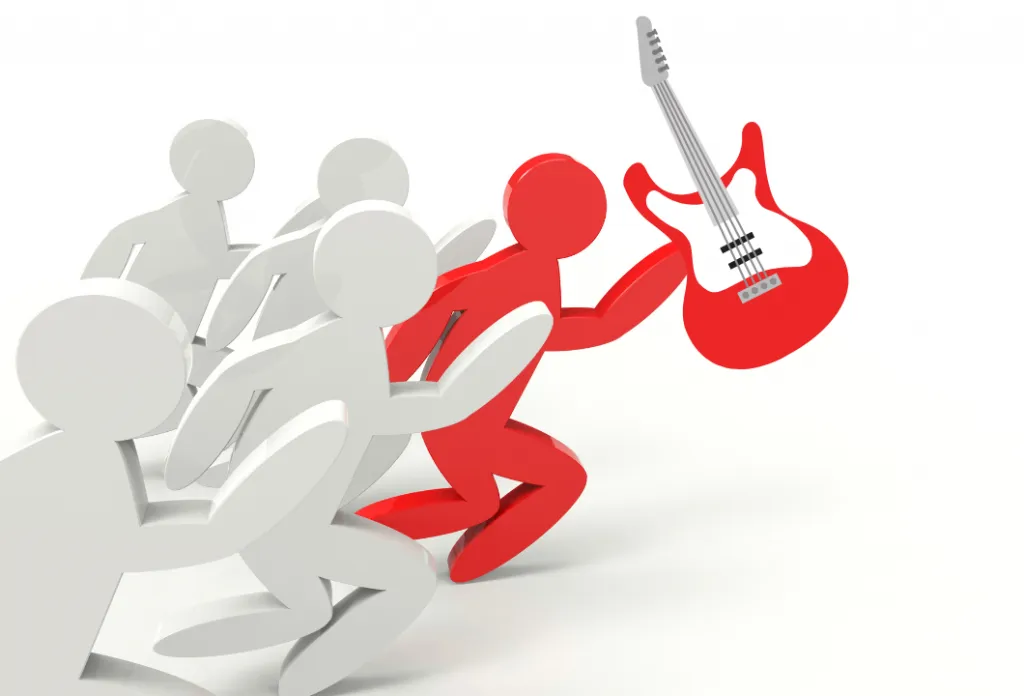
A bit of friendly competition is always a fun way to drive you and your guitar buddies to improve your skills. Back in the early days of learning, I would challenge other guitar players in my school to master certain skills. The competition was a fun way of pushing each other to grow faster.
Take Online Guitar Lessons
Incorporating guitar lessons into your practice routine is a great way to rapidly improve your skill. Learning tips from skilled players is one of the best ways to grow as a musician, as you can gain experience that otherwise you would never have been exposed to. There are many great online guitar lessons that I find helpful for inspiring me and learning advanced topics in depth. They can also be helpful when you learn songs.
Make a New Year’s Resolution to Double Your Practice Time
Challenging yourself and setting goals is one of the best ways to create a solid practice routine. If you set yourself the challenge of doubling (or at least just increasing) the time you spend learning guitar, then you can see massive results. Try upping your weekly schedule, or pushing yourself to learn twice as many new songs as you normally do.
Spend Time Crafting Your Guitar Tone
This can take a while to develop and understand, but each famous guitarist has a unique tone, almost like a fingerprint. So make sure you spend time crafting your sound.
A large part of this is defined by the techniques and performance style you have, but amps, effects pedals, pickups, and even plectrums all contribute to the infinitely tweakable depths of guitar tones. So try to incorporate these elements of discovery into your practice routine.
Practice With Other Musicians

Playing with others is important and helps you to develop your playing and listening skills. Not just other guitarists, but any kind of musician: drummers, singers, bassists, you name it! The more, the better, as you will be best equipped for jamming with any type of instrument in the future.
Also, chat to your guitar friends or a guitar teacher for extra tips! Even online communities like Reddit and Discord can be great places to chat with experienced guitar players.
Keep It Fun
This is probably the most important thing to remember. Music should always be about having fun. While a perfect guitar practice routine matters to improve your skills, a bad practice routine or over-practicing can easily kill the joy of guitar.
You should also spend time exploring music, messing around, and playing the instrument for sheer enjoyment, without always worrying about improvement.
• • •
Guitar Practice Schedule Examples
Here are some example practice sessions for inspiration when building your own. I’ve covered a range of skill levels and genres to demonstrate how much variation you can find from guitar player to player.
Beginner Guitar Practice Routine
When you’re new to guitar, it’s all about getting comfortable with the instrument and learning the basic skills.
Here is a basic outline of things to practice.
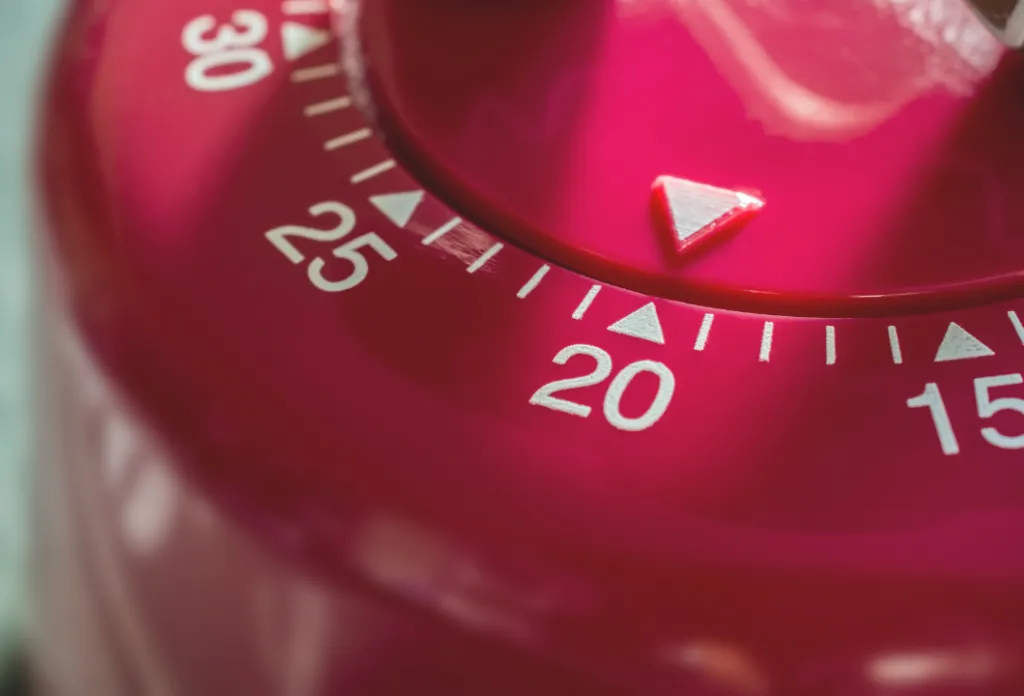
- Left and right-hand coordination.
- General finger dexterity and control (from index to pinky) and picking technique.
- Understanding the fretboard.
- Learning a few chords and building muscle. (Generally basic open chords)
- Understanding the basics of music theory.
- Learning some easy songs and chords.
At the beginner stage, even just 20 minutes a day can make a huge improvement and quickly see you hitting the intermediate category.
Intermediate Guitar Practice Routine
For intermediate players, it’s all about improving their skill level and mastering specific skills that contribute to their unique sound.

- Practice scales and how they connect.
- Mastering barre chords.
- Learning expressive techniques (hammer-ons, pulls, bending, vibrato, sliding).
- Expanding your vocabulary (more chord shapes, riffs, and licks, learning more songs).
- Getting deeper into theory (keys, rhythm) and ear training.
- Improvising over a backing track.
For intermediate players, I would recommend aiming for at least 1-2 hours a day for a solid rate of progression. At this level, you might feel yourself becoming more committed and connected to the guitar, so these times can even feel short if you are passionate.
Advanced Guitar Practice Routine
For an advanced guitarist, it’s all about perfecting certain skills, mastering music theory, and going deep on exercises that maintain solid technique.
Advanced guitarists will generally either be playing in bands (originals or covers) or writing their songs for solo performance, so their practice routines should encourage growth in the right areas.

They will also be maintaining (and still improving) their mastery of foundational elements, like chords and scales. This all helps them to write better songs.
- Music theory work: Master scales and chord structures and progressions
- Deep exploration of songs: Why does this guitar riff sound so good?
- Writing songs: Also, contributing to a band.
- Building muscle: In order to play faster and longer.
Advanced players can generally commit more time to practice. Although at some stage, you will reach a ‘plateau’ where it becomes more about maintaining and perfecting skills rather than learning new concepts.
Genre-Based Practice Routines
There is also a lot of variation between practice sessions for different genres.
- Rock practice routine: Listen to favorite guitar players > Warm-up > Power Chords > Soloing > Play to a recording
- Jazz practice routine: Finger Exercises > Jazz Scales > Jazz Chords > Practice improvisation
- Metal practice routine: Metal finger techniques > Tone Experimentation > Rhythm and speed > Shredding exercises.
• • •
Guitar Practice Routine FAQs
Let’s now answer a few of the most common questions that come up when you’re designing and implementing your guitar practice routine.
How many hours a day should I practice guitar?
I recommend aiming for at least 30-60 minutes a day, although more is always better. Ultimately, the answer to this question is different for everyone, based on how much time you have and how motivated you are.
If you’re like me, then you probably want to play guitar all day anyway.
Even 30 minutes a day can be helpful. But I recommend aiming for around 2-4 hours based on how quickly you want to progress.
It’s also important to make sure that you practice regularly. It’s much better to play for 1 hour a day, every day of the week, rather than spending a whole day practicing only once a week.
Having continuous, regular exposure is the best for building and reinforcing the neurological and mechanical processes needed to become a good guitar player.
Can you practice guitar too much?
You definitely can overdo it when it comes to guitar practice, although everyone has their own limits, so I can’t give a specific amount of time.
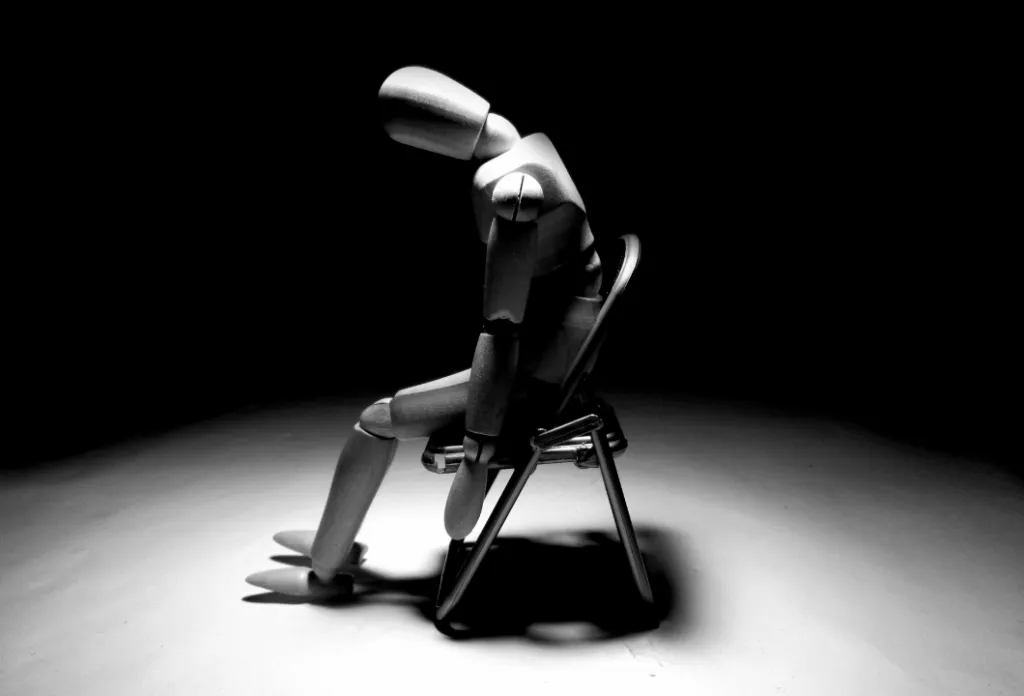
Over-practicing can cause issues in a couple of different areas.
First, there are several physical risks involved with practicing excessively. You can strain muscles involved with playing the guitar, anywhere from the fingers, wrists, shoulders, and even your back.
Moreover, particularly if you play electric guitar, your hearing is at risk. Excessive exposure to loud noise damages your hearing, which is the last thing you want as a guitarist. Guitar amps can be super loud, so make sure you always take regular breaks if playing at volume.
There are also psychological effects of playing guitar too much. Forcing yourself to play when you don’t want to can quickly kill your passion and joy for playing the instrument. Remember, the guitar is meant to be fun, not a chore.
How do you get motivated to practice?
The best way is to listen to music that you love. Watch performances of guitarists that inspire you to play. It might be different for individuals based on their underpinning reasons for wanting to play guitar.
• • •
Good Luck on Your Journey to Guitar Mastery
Making a solid guitar practice routine is probably one of the most powerful driving forces for developing your guitar skills at a consistent rate.

Spend time following the instructions above and build a routine that inspires you and covers the guitar chops you wish you had. Stick at it, and you’ll see results much faster than you might expect.
Mix this information with our Top Tips for Learning Guitar to get an even better sense of how to skill up. One closing note, make sure you play on a guitar that you love and feels good in your hands. If you need a new one, check our guide on How to Choose a Guitar. If you’re an electric player then you’ll also need a practice amplifier.
Patience and dedication are key — good luck!
• • •
References:
- The Guardian, “Jimi Hendrix, in his own words: ‘I dig Strauss and Wagner – those cats are good’,” aspublished here: https://www.theguardian.com/music/2013/dec/08/jimi-hendrix-in-his-own-words
- Guitar World, “Revisit Steve Vai’s Classic Guitar World Lessons with New Book, ‘Steve Vai’s Guitar Workout’,” as published here https://www.guitarworld.com/features/revisit-steve-vais-classic-guitar-world-lessons-new-book-steve-vais-guitar-workout



